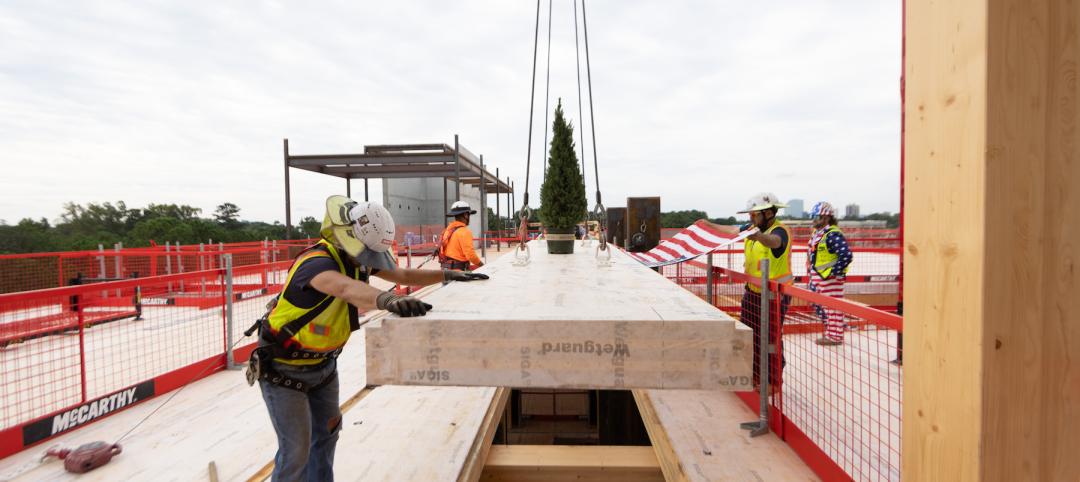Looking back at the past 10 years in mass timber design—since our firm’s first mass timber building, the John W. Olver Design Building at the University of Massachusetts Amherst—it is evident that as a building material mass timber and especially cross laminated timber (CLT) has come a long way. Designed in 2014 and completed in 2017, our 87,500-sf Design Building was one of the first large-scale mass timber buildings in the U.S. It demonstrated the possibilities of mass timber with CLT gravity and lateral systems and a cutting-edge concrete-CLT composite floor system.
Since the landmark UMASS project kicked off a decade ago, more than a thousand mass timber buildings have been planned and hundreds have been realized as built projects. A quick look at WoodWork’s Wood Innovation Network (WIN) proves this point of exponential acceleration. According to WIN, 10 years ago, there were zero building-grade CLT fabrication plants in the U.S. and only a few CLT fabrication plants in North America. Today, there are more than a dozen CLT fabrication plants in North America, and all of Europe’s major CLT producers have a presence in the region.
Simpson Strong-Tie, one of the largest hardware suppliers to the light-frame wood construction market, now has a robust offering of connections hardware for a variety of mass timber products that help lower the cost of mass timber construction.
In 2014, the tallest mass timber building in North America was eight stories. Today, it’s 25 stories.
In 2016, North America’s annual International Mass Timber Conference in Portland, Ore., added “International” to its name and grew from less than 300 attendees that year to over 3,000 last year.
The safety, reliability, and durability of mass timber buildings to replace steel or concrete buildings of scale and size have been proven many times over, especially in large office buildings and housing projects—building typologies with repetitive elements and modules that cater to the efficiencies inherent in the production of large CLT billets, often 8x40 feet and larger.
The distinction of the LWA-designed Adohi Hall Student Housing at the University of Arkansas in Fayetteville of being the largest CLT building in the U.S. at the time of its completion in 2019 has long been surpassed. It became a “proof of concept” for many projects, notably the Walmart headquarters and its entire mass timber campus now under construction in nearby Bentonville.

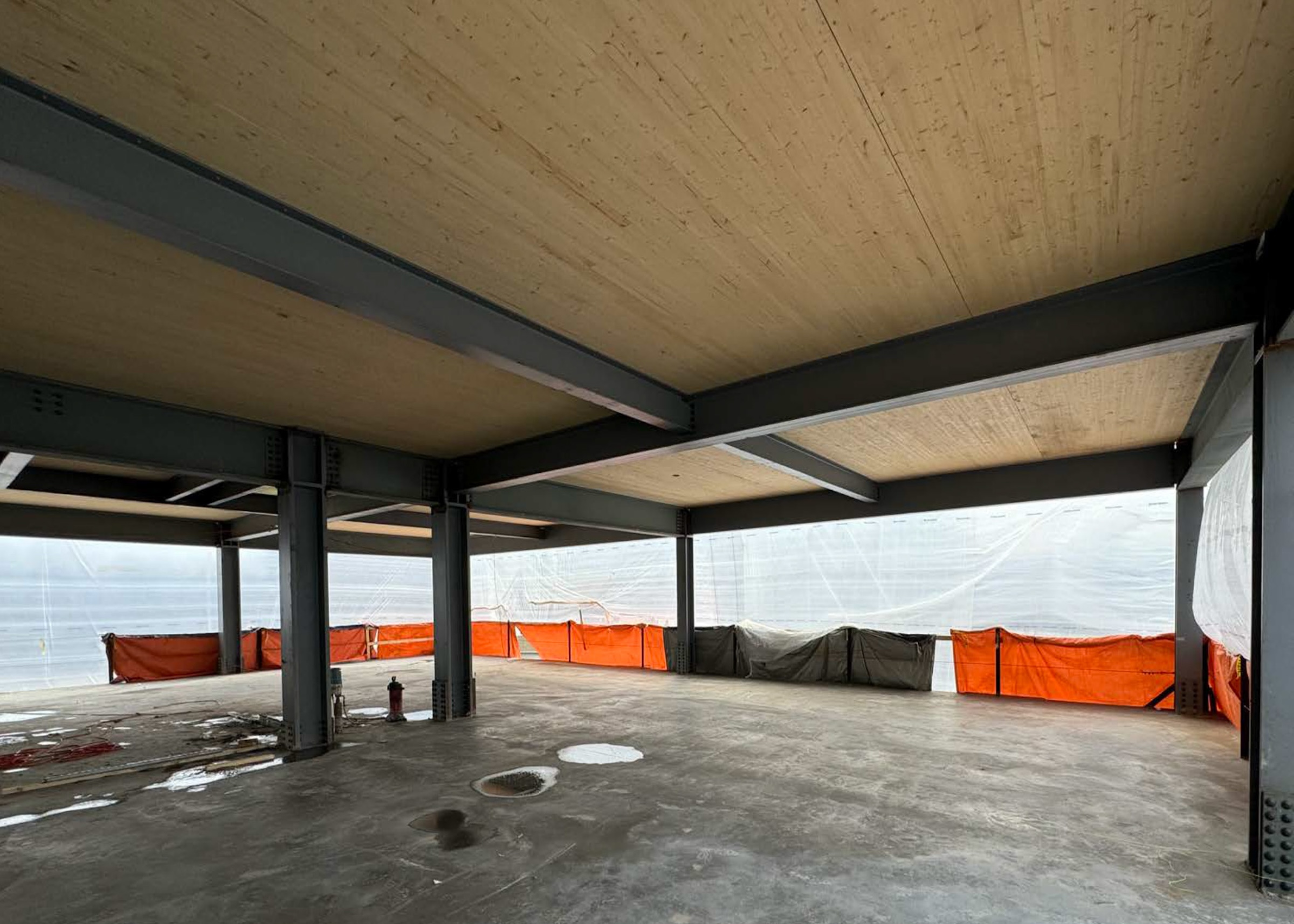
The early decades of use of this innovative material had three common set of details across most projects:
- a mass timber floor panel in conjunction with a post-and-beam structure of glulam columns and beams
- a concrete or other “wet” topping with a thin acoustic mat above the mass timber floor panel for vibration and acoustic control
- a metal hanger for column-to-beam connections.
These three common components—paired with a concrete core or a braced steel lateral structural system—solve a vast majority of architectural and structural conditions necessary for mass timber buildings. As mass timber evolves from this first decade of “common” projects, our firm is finding an increasing variety of mass timber solutions. Here are three primary examples:
1. The rise of mass timber-steel hybrid structures.
Across the U.S., we are seeing more steel frame and CLT floor panel hybrid structural systems. This approach maintains a column grid and beam depth common among many proven building types, especially the 30x30-foot steel office grid.
The CLT floor panel (with a wet topping applied, of course) in lieu of a composite metal deck and concrete floor allows for maximum use of wood fiber, which is important for carbon sequestration. When designed properly, it allows for exposure of the underside of the wood floor panel for aesthetic considerations.
Mass timber-steel hybrid structures have become a preferred solution for projects with set building typologies or cost expectations. Projects such as 901 East Sixth in Austin, Texas, the Engineering West 2 Building at Penn State University in State College, Pa., North Hall Residence at the Rhode Island School of Design in Providence, R.I., and the new CIS building at Cornell University in Ithaca, N.Y., are prime examples showcasing the interchangeability of mass timber and steel.
2. Novel connections reduce the need for steel reinforcement for mass timber buildings.
Innovative approaches to connections detailing that drastically limit or eliminate steel from mass timber buildings are being researched. While still bespoke and quite expensive, solutions to an all-wood structure without steel reinforcements can be seen in projects like the Tamedia Office Building in Zurich, Switzerland, completed in 2013.
But a workforce housing project in Seattle completed in 2023—called Heartwood, designed by atelierjones and detailed with Timberlab—demonstrates the promise of a cost-efficient, all-wood mass application. The team’s design eliminates the steel connector, often an expensive component of a mass timber building, in a way that can be applied to a wide array of these structures with less carbon footprint.
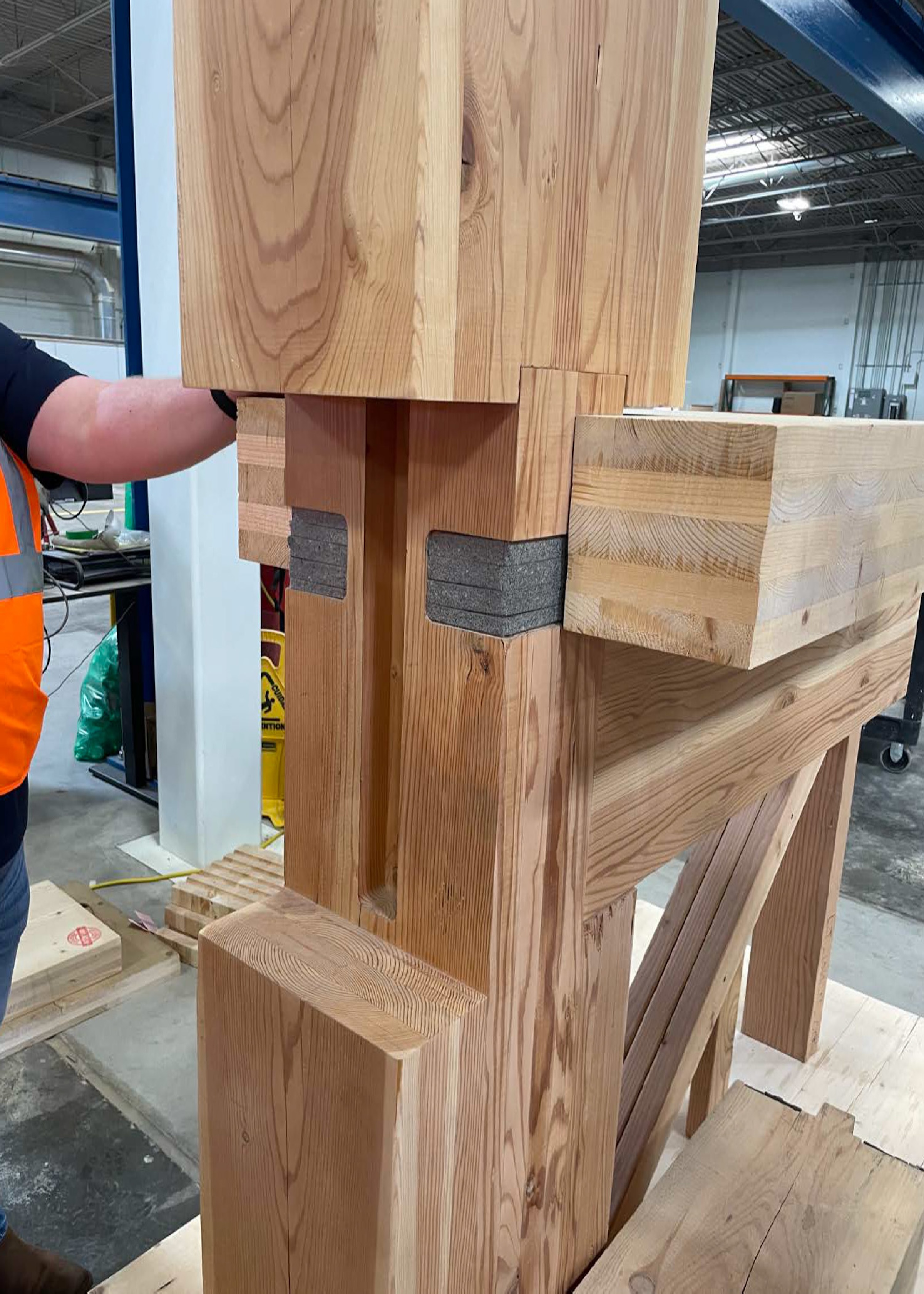
3. Teams are leveraging the two-way span capability of mass timber floor panels.
Efforts to maximize use of the inherent two-way span capability of mass timber floor panel types such as CLT and MPP (mass plywood panel) are increasing. An early example of such an approach is the Brock Commons Tallwood House at the University of British Columbia.
While best known for being the tallest mass timber building at 18 stories at the time of its completion, it also featured a unique system of highly repetitive and closely spaced CLT panels, point supported on glulam columns without beams, using their two-way spanning capability. The column spacing was relatively limited to about nine-foot widths given the production capability of CLT panel widths, resulting in very closely spaced columns (but applicable for student housing comprising many narrow dorm rooms).
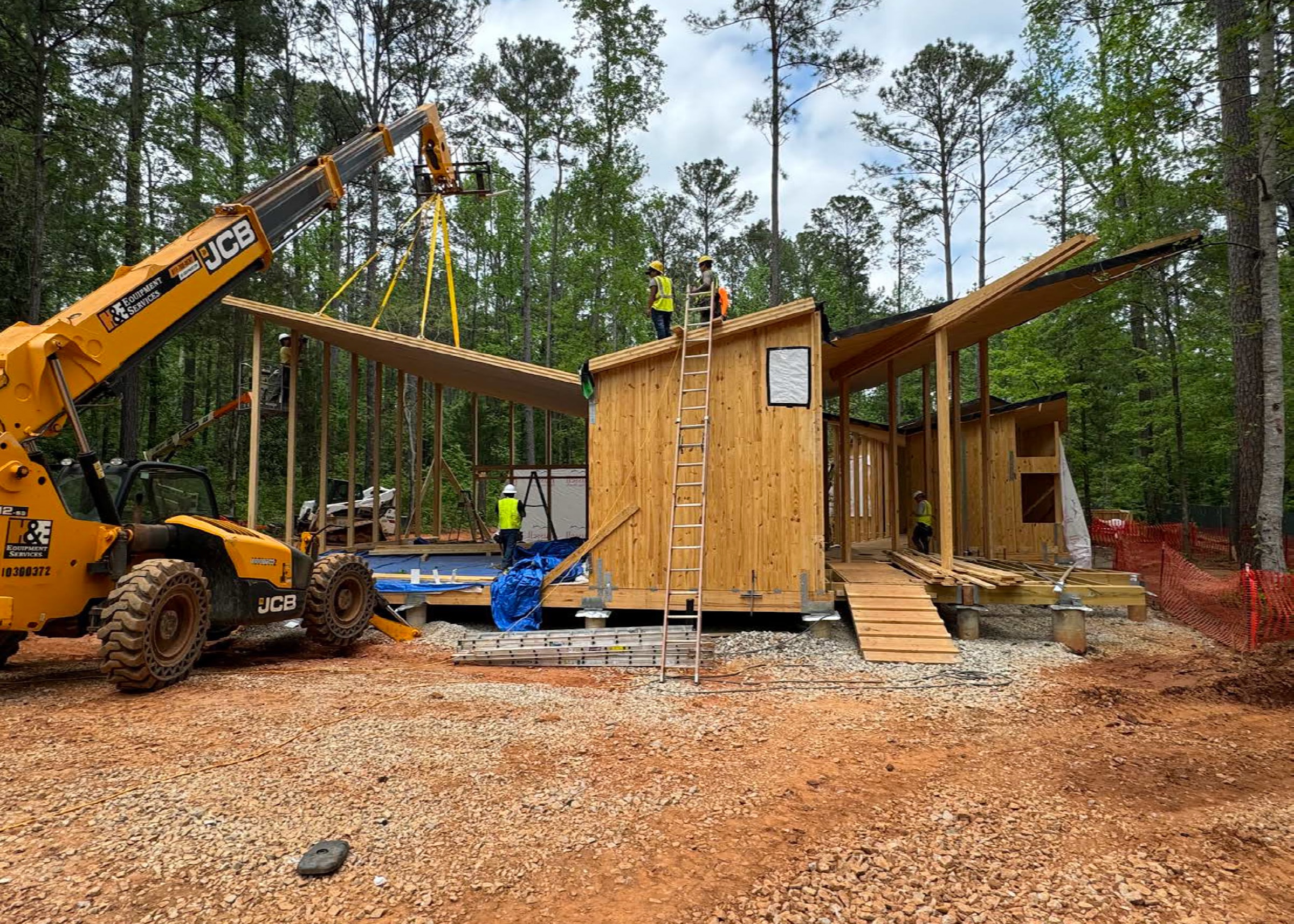
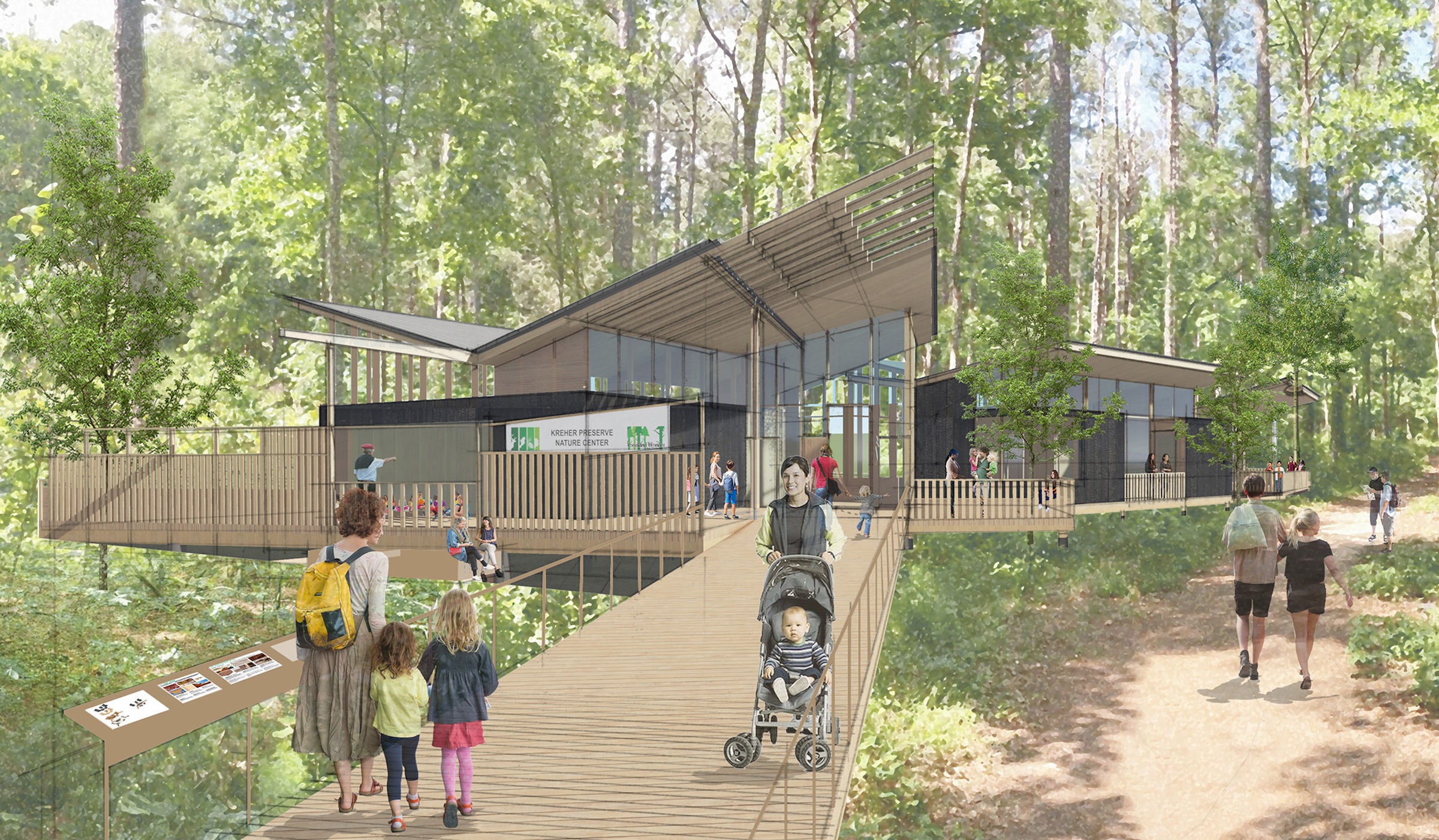
However, cutting edge research in gluing technology, especially in Europe by Timber Systems 3, is allowing for much greater spans and a truer realization of the potential of mass timber to replicate the revolutionary and versatile flat slab reinforced concrete with point-supported columns—such as those made architecturally famous by Le Corbusier in his polemical Maison Dom-Ino, giving rise to many tenets of modern architecture in the 1920s.
Intrigued by this potential, we are exploring the point-supported, two-way span capability of CLT at our KPNC Environmental Education Center project at Auburn University. There, we are cantilevering CLT panels on glulam columns without beams to maximize the effect of a flat slab mass timber roof without the visual barrier of beams below, to facilitate the connection of interior spaces to the forest preserve outside.
Collectively, these three approaches investigate the interchangeability, cost efficiency, and spatial versatility of mass timber. The objective is to expand mass timber architecture beyond the conventional use of a one-way floor span supported by beams and columns. All three methods are necessary and need to be further explored to continue to evolve and maximize the potential of mass timber.+
Related Stories
Mass Timber | Oct 25, 2024
Mass timber achieves ‘firsts’ in three more markets
Sustainability and aesthetics continue to drive this product’s demand.
Sustainable Design and Construction | Oct 10, 2024
Northglenn, a Denver suburb, opens a net zero, all-electric city hall with a mass timber structure
Northglenn, Colo., a Denver suburb, has opened the new Northglenn City Hall—a net zero, fully electric building with a mass timber structure. The 32,600-sf, $33.7 million building houses 60 city staffers. Designed by Anderson Mason Dale Architects, Northglenn City Hall is set to become the first municipal building in Colorado, and one of the first in the country, to achieve the Core certification: a green building rating system overseen by the International Living Future Institute.
Mass Timber | Sep 26, 2024
5 lessons in water mitigation for mass timber projects
Sustainability leaders from Skanska, RDH, and Polygon share five tips for successful water mitigation in mass timber construction.
Mass Timber | Sep 17, 2024
Marina del Rey mixed-use development is L.A.’s largest mass timber project
An office-retail project in Marina del Rey is Los Angeles’ largest mass timber project to date. Encompassing about 3 acres, the 42XX campus consists of three low-rise buildings that seamlessly connect with exterior walkways and stairways. The development provides 151,000 sf of office space and 1,500 sf of retail space.
Airports | Aug 22, 2024
Portland opens $2 billion mass timber expansion and renovation to its international airport
This month, the Portland International Airport (PDX) main terminal expansion opened to passengers. Designed by ZGF for the Port of Portland, the 1 million-sf project doubles the capacity of PDX and enables the airport to welcome 35 million passengers per year by 2045.
Mass Timber | Jun 26, 2024
Oregon State University builds a first-of-its-kind mass timber research lab
In Corvallis, Oreg., the Jen-Hsun Huang and Lori Mills Huang Collaborative Innovation Complex at Oregon State University aims to achieve a distinction among the world’s experimental research labs: It will be the first all-mass-timber lab meeting rigorous vibration criteria (2000 micro-inches per second, or MIPS).
Mass Timber | Jun 17, 2024
British Columbia hospital features mass timber community hall
The Cowichan District Hospital Replacement Project in Duncan, British Columbia, features an expansive community hall featuring mass timber construction. The hall, designed to promote social interaction and connection to give patients, families, and staff a warm and welcoming environment, connects a Diagnostic and Treatment (“D&T”) Block and Inpatient Tower.
Mass Timber | Jun 10, 2024
5 hidden benefits of mass timber design
Mass timber is a materials and design approach that holds immense potential to transform the future of the commercial building industry, as well as our environment.
Mass Timber | May 31, 2024
Mass timber a big part of Western Washington University’s net-zero ambitions
Western Washington University, in Bellingham, Wash., 90 miles from Seattle, is in the process of expanding its ABET-accredited programs for electrical engineering, computer engineering and science, and energy science. As part of that process, the university is building Kaiser Borsari Hall, the 54,000-sf new home for those academic disciplines that will include teaching labs, research labs, classrooms, collaborative spaces, and administrative offices.
Mass Timber | May 17, 2024
Charlotte's new multifamily mid-rise will feature exposed mass timber
Construction recently kicked off for Oxbow, a multifamily community in Charlotte’s The Mill District. The $97.8 million project, consisting of 389 rental units and 14,300 sf of commercial space, sits on 4.3 acres that formerly housed four commercial buildings. The street-level retail is designed for boutiques, coffee shops, and other neighborhood services.




